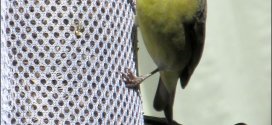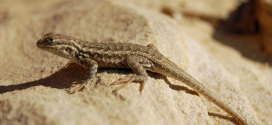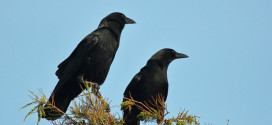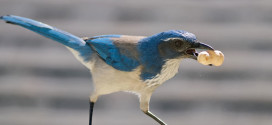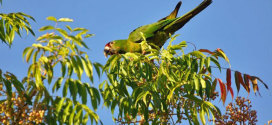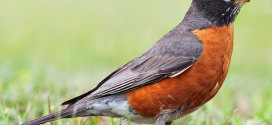Creating a Butterfly Haven in Your Garden As the sun peeks through the morning mist, a flutter of orange and black breaks the monotony of green in your garden. It’s a monarch butterfly, embarking on its remarkable journey, and your garden is a part of this majestic creature’s story. Why Monarchs Matter Monarch butterflies are not just a symbol of …
Read More »Animals
Lesser Goldfinch
Colorful and energetic, the lesser goldfinch is a welcome bird in the southwestern United States and Mexico. Not only does this finch have a delightful trilling song, but its propensity to eat thousands of weed seeds is appreciated by farmers and gardeners alike. Common Name: Lesser Goldfinch Scientific Name: Carduelis psaltria Appearance: Bill: Conical, pointed, dark Size: 4.5 inches long …
Read More »Black Phoebe
The black phoebe is a common visitor in the Sunnyvale garden. It is mainly insectivorous and waits on a perch before flying out and catching its prey in the air. (Sayornis nigricans) is a passerine bird in the tyrant-flycatcher family. It breeds from southwest Oregon and California south through Central and South America. It occurs year-round throughout most of its …
Read More »Coast Range Fence Lizard
Our Sunnyvale garden has a resident Coast Range Fence Lizard. He has been spotted near the parking strip in front, on the side yard, and in and around the back yard. Yeah, that’s only one hundred feet but to a 3-inch long lizard that is the back-40. Sceloporus occidentalis bocourtii is a subspecies of the Western fence lizard. This taxon, …
Read More »Northern Mockingbird
If you’ve been hearing an endless string of 10 or 15 different birds singing outside your house, you might have a Northern Mockingbird in your yard. These slender-bodied gray birds pour all their color into their personalities. They sing almost endlessly, even sometimes at night, and they flagrantly harass birds that intrude on their territories, flying slowly around them or …
Read More »American Crow
The Crow is a very common bird in the neighborhood but rarely appears in my backyard. The most likely reason is that the crow has decided there is not enough room to evaluate threats and escape. We often see crows in the cypress trees in a neighbor’s yard. American Crows are familiar over much of the continent: large, intelligent, all-black …
Read More »Scrub Jay
The type of blue jay we see in Sunnyvale are the Western Scrub Jay. Robin-sized, but large strong bill and long tail make it appear larger. Head, wings, and tail blue (conspicuous when it glides in a long, undulating flight). Their back is dull brown; underparts light gray. No crest; dusky face mask. White throat offset by incomplete blue necklace. …
Read More »Wild Parrots of Sunnyvale
A flock of wild parrots hang out most often in the area near El Camino Ave and Mathilda Ave, in Sunnyvale, where Matilda turns into Saratoga-Sunnyvale Road. At various times and, particularly, towards the end of the day, they congregate in Los Palmas Park, just a few blocks away. A cluster of palm trees in the park provide a safe …
Read More »American Robin
The quintessential early bird, American Robins are common sights on lawns across North America, where you often see them tugging earthworms out of the ground. Robins are popular birds for their warm orange breast, cheery song, and early appearance at the end of winter. Though they’re familiar town and city birds, American Robins are at home in wilder areas, too, …
Read More »Chestnut Chickadee
A handsome chickadee that matches the rich brown bark of the coastal trees it lives among, the Chestnut-backed Chickadee is the species to look for up and down the West Coast and in the Pacific Northwest. Active, sociable, and noisy as any chickadee, you’ll find these birds at the heart of foraging flocks moving through tall conifers with titmice, nuthatches, …
Read More »
